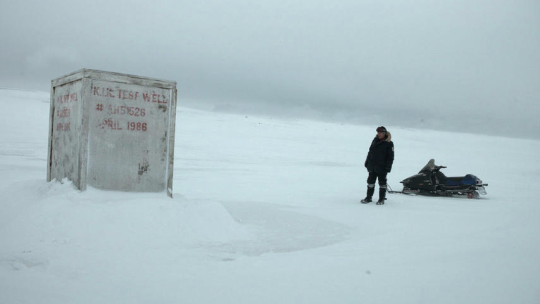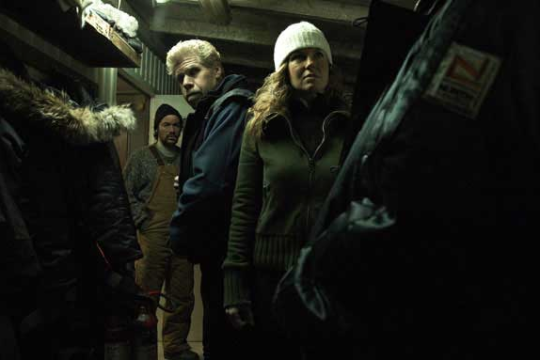Larry Fessenden's "The Last Winter," The Only Scary Movie About The Scariest Thing On Earth byDavid Roth
By Yasmina Tawil

There are certain generally held expectations about the relationship between reality as we live it every day and films set in a dystopian future. No one who has watched even a few minutes of cable news in the last decade or so could doubt that contemporary American life, in some ineffable and undeniable way, currently exists within one or more Paul Verhoeven films. But while the broad strokes generally rhyme, some crucial details dont quite match up. The hearty tonal psychosis, relentless soul-deadening violence, and amorphously horny militarism are very much in place, but contemporary life still lags behind the Verhoevenverse in terms of extremely ambitious lapels on mens suits, routine space travel, and robotic cop technology. Natural as it is to envy the efficient transit system of Cohaagens Mars or even just wish for a little more Renee Soutendijk in the monitors, this is generally good news.
There is one notable exception to the usual reality-to-dystopia ratio, though, that is both humbler and infinitely more unsettling. On September 11, 2006, Larry Fessendens The Last Winter premiered at the Toronto International Film Festival. The film was the most ambitious and expansive of the independent horror auteurs career, and a long time in the making. Fessenden started writing the film in November of 2001; producer Jeff Levy-Hinte began shopping the script, on which Fessenden collaborated with the writer Robert Leaver, in 2003. It was a horror movie, but more specifically it was a Larry Fessenden Horror Movie, which is to say a doomy character-driven mood piece, with the dominant mood being Choking Dread. Also, it was about climate change, and set at a remote oil company outpost in Alaskas Arctic National Wildlife Reserve where debates about the ethics of natural resource exploitation give way to something darker. It was not going to be an easy sale, in other words, and it did not sell. Levy-Hinte struck out with the larger independent studios.
Every one of them said the movie would be a tweeny, Fessenden told Indiewire in 2007, in between genresnot horror, not dramaand passed. The film was eventually financed with a grab-bag of private funding; after scouting locations in Alaska and Canada, Fessenden wound up shooting most of the film in Iceland, with the Icelandic Film Commission coming on as a co-producer. The production started in March of 2005, and the conditions during the three-week shoot mirrored the chaos in the filmin subzero temperatures, or in un-seasonal rain, or winds of 40 knots, or blizzards, or a blistering sun, Fessenden wrote in August of 2006. Iceland is experiencing acutely the radical temperature shifts from global warming even today, and many of the outlandish scenarios in the script were actually occurring. Fessenden immediately re-cut the film after its TIFF premiere; months later, IFC beat out a few competitors for the rights to it. There was no bidding war, Fessenden told Indiewire.
The Last Winter opened in a limited theatrical/streaming release in late September of 2007 and grossed less than a hundred thousand dollars worldwide. Its perhaps the fullest realization to date of That Larry Fessenden Feeling, which connects an astute and engaged social consciousness with a certain freewheeling reverence for horrors foundational myths. But, more to the point, The Last Winter holds a bleak record for dystopian films given how quickly its central conceit went from disturbing speculative fictionliterally the stuff of a horror film, albeit a low-key and dread-intensive independent oneto an observable, scientifically quantified fact. The Last Winter posited the melting of the Alaskan permafrost as an opening onto the end of everything else when it opened in six theaters in September of 2007. It was a little less than a decade before reality caught all the way upto the first part, at least.




